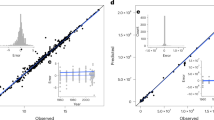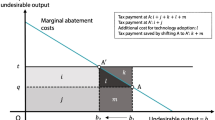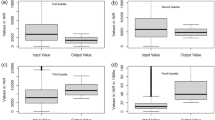Abstract
Increased global agricultural output since the 1990s has been largely driven by innovations that raised the efficiency of use of labour, land, capital and other inputs—referred to as total factor productivity (TFP) growth. Yet debates over the future of farming still weigh heavily on models of agricultural land use and socioecological trade-offs along traditional (partial factor productivity) growth paths of ‘intensification’ or ‘extensification’. Overlooking the role of TFP in the evolution of global agriculture not only obscures the changing drivers of productivity growth but also misses vital linkages with agricultural sustainability and farming system resilience. We describe two pathways for growth—technology-based and ecosystem-based—and link these in a heuristic framework that emphasizes sustainability and resilience outcomes in farming systems. Interdisciplinary research is urgently needed to empirically examine the dynamic interplay of TFP growth, farming system sustainability and resilience. Such insights will help to transform TFP growth as metric into actionable efforts on farms and beyond.
This is a preview of subscription content, access via your institution
Access options
Access Nature and 54 other Nature Portfolio journals
Get Nature+, our best-value online-access subscription
$29.99 / 30 days
cancel any time
Subscribe to this journal
Receive 12 digital issues and online access to articles
$119.00 per year
only $9.92 per issue
Buy this article
- Purchase on Springer Link
- Instant access to full article PDF
Prices may be subject to local taxes which are calculated during checkout


Similar content being viewed by others
Change history
12 February 2019
Line breaks have been added in Table 1.
References
Godfray, H. C. J. et al. Food security: the challenge of feeding 9 billion people. Science 327, 812–818 (2010).
Springmann, M. et al. Options for keeping the food system within environmental limits. Nature. https://doi.org/10.1038/s41586-018-0594-0 (2018).
Matson, P. A., Parton, W. J., Power, A. G. & Swift, M. J. Agricultural intensification and ecosystem properties. Science 277, 504–509 (1997).
Tilman, D., Cassman, K. G., Matson, P. A., Naylor, R. & Polasky, S. Agricultural sustainability and intensive production practices. Nature 418, 671–677 (2002).
Foley, J. A. et al. Global consequences of land use. Science 309, 570–574 (2005).
West, P. C. et al. Leverage points for improving global food security and the environment. Science 345, 325–328 (2014).
Tscharntke, T. et al. Global food security, biodiversity conservation and the future of agricultural intensification. Biol. Cons. 151, 53–59 (2012).
Garnett, T. et al. Sustainable intensification in agriculture: premises and policies. Science 341, 33–34 (2013).
Rockström, J. et al. Sustainable intensification of agriculture for human prosperity and global sustainability. Ambio 46, 4–17 (2017).
Fuglie, K. in Productivity Growth in Agriculture: An International Perspective (eds Fuglie, K. O. et al.) 335–368 (CAB International, Wallingford, 2012).
Fuglie, K. Accounting for growth in global agriculture. BAE 4, 201–234 (2015).
Fuglie, K. et al. Metrics of Sustainable Agricultural Productivity G20 MACS White Paper (2016).
Chavas, J. P. Dynamics, viability and resilience in bioeconomics. Annu. Rev. Resour. Econ. 7, 209–231 (2015).
Chavas, J. P. The Economics of Poverty Traps (eds Barrett, C. B et al.) 291–314 (Univ. Chicago Press, Chicago, 2018).
Lobell, D. B. et al. Prioritizing climate change adaptation needs for food security in 2030. Science 319, 607–610 (2008).
Baldoni, E., Coderoni, S. & Esposti, R. The productivity and environment nexus with farm-level data. The case of carbon footprint in Lombardy FADN farms. BAE 6, 119–137 (2017).
Chambers, R. Thinking About Agricultural Productivity Accounting in the Presence of By-products White Paper No. 16–02 (Department of Agricultural and Resource Economics, Univ, Maryland, 2016).
Gollin, D. Handbook of Agricultural Economics 3825–3866 (Elsevier, Amsterdam, 2010).
Headey, D., Alauddin, M. & Rao, D. S. P. Explaining agricultural productivity growth: an international perspective. Agr. Econ. 41, 1–14 (2010).
Fuglie, K. O. & Wang, S. L. New evidence points to robust but uneven productivity growth in global agriculture. Glob. J. Emerg. Market Econ. 5, 23–30 (2013).
Binswanger, H. P. The measurement of technical change biases with many factors of production. Am. Econ. Rev. 64, 964–976 (1974).
Chavas, J. P., Shi, G., Nehring, R. & Stiegert, K. The effects of biotechnology on productivity and input demands in US agriculture. J. Agr. Appl. Econ. 50, 387–407 (2018).
Chavas, J. P. & Aliber, M. An analysis of economic efficiency in agriculture: a nonparametric approach. J. Agr. Resour. Econ. 18, 1–16 (1993).
Klasen, S. et al. Economic and ecological trade-offs of agricultural specialization at different spatial scales. Ecol. Econ. 122, 111–1120 (2016).
Evenson, R. E. & Gollin, D. Assessing the impact of the Green Revolution, 1960 to 2000. Science 300, 758–762 (2003).
Avila, A. & Evenson, R. Handbook of Agricultural Economics 3713–3768 (Elsevier, Amsterdam, 2010).
Nin, A., Arndt, C., Hertel, T. & Preckel, P. Bridging the gap between partial and total factor productivity measures using direction distance functions. Am. J. Agri. Econ. 85, 928–42 (2003).
Khoury, C. K. et al. Increasing homogeneity in global food supplies and the implications for food security. Proc. Natl Acad. Sci. USA 111, 4001–4006
Pingali, P. Agricultural policy and nutrition outcomes—getting beyond the preoccupation with staple grains. Food Secur. 7, 583–591 (2015).
DeFries, R. et al. Metrics for land-scarce agriculture. Science 349, 238–240 (2015).
DeClerck, F. A. et al. Agricultural ecosystems and their services: the vanguard of sustainability? Curr. Opin. Environ. Sust. 23, 92–99 (2016).
Power, A. G. Ecosystem services and agriculture: tradeoffs and synergies. Philos. Trans. R. Soc. Lond. B 365, 2959–2971 (2010).
Campbell, B. et al. Agriculture production as a major driver of the Earth system exceeding planetary boundaries. Ecol. Soc. 22, 8 (2017).
Bennett, E. et al. Toward a more resilient agriculture. Solutions 5, 65–75 (2014).
Chavas, J. P. On food security and the economic valuation of food. Food Policy 69, 58–67 (2017).
Measuring What Matters in Agriculture and Food Systems (UN Environment, The Economics of Ecosystems and Biodiversity, 2018).
Walker, B., Holling, C. S., Carpenter, S. & Kinzig, A. Resilience, adaptability and transformability in social–ecological systems. Ecol. Soc. 9, 5 (2004).
Folke, C. Resilience: the emergence of a perspective for social–ecological systems analyses. Glob. Environ. Change 16, 253–267 (2006).
Headey, D. M. Rethinking the global food crisis: the role of trade shocks. Food Policy 36, 136–146 (2011).
Bellemare, M. Rising food prices, food price volatility, and social unrest. Am. J. Agric. Econ. 97, 1–21 (2015).
Wu, J. Landscape sustainability science: ecosystem services and human well-being in changing landscapes. Landscape Ecol. 28, 999–1023 (2013).
Lewis, D. J., Barham, B. L. & Zimmerer, K. Spatial externalities in agriculture: empirical analysis, statistical identification, and policy implications. World Dev. 36, 1813–1829 (2008).
Bongiovanni, R. & Lowenberg-DeBoer, J. Precision agriculture and sustainability. Precis. Agric. 5, 359–387 (2004).
Aubert, B. A., Schroeder, A. & Grimaudo, J. IT as enabler of sustainable farming: an empirical analysis of farmers' adoption decision of precision agriculture technology. Decis. Support Syst. 54, 510–520 (2012).
Shi, G., Chavas, J. P. & Lauer, J. Commercialized transgenic traits, maize productivity and yield risk. Nat. Biotechnol. 31, 111–114 (2013).
Gilbert, N. A hard look at GM crops. Nature 497, 24–26 (2013).
Jacobsen, S. E., Sørensen, M., Pedersen, S. M. & Weiner, J. Feeding the world: genetically modified crops versus agricultural biodiversity. Agron. Sustain. Dev. 33, 651–662 (2013).
Hazell, P. B. Is there a future for small farms? Agric. Econ. 32, 93–101 (2005).
National Academies of Sciences, Engineering, and Medicine. Genetically Engineered Crops: Experiences and Prospects (National Academies Press, Washington DC, 2016).
Rudel, T. K. et al. Agricultural intensification and changes in cultivated areas, 1970–2005. Proc. Natl Acad. Sci. USA 106, 20675–20680 (2009).
Hertel, T. W., Ramankutty, N. & Baldosa, U. L. C. Global market integration increases likelihood that a future African Green Revolution could increase crop land use and CO2 emissions. Proc. Natl Acad. Sci. USA 111, 13799–13804 (2014).
Fuglie, K., Wang, S. L. & Ball, V. E. Productivity Growth in Agriculture: An International Perspective (CAB International, Wallingford, 2012).
Robertson, P. G. et al. Cellulosic biofuel contributions to a sustainable energy future: choices and outcomes. Science 356, eeal2324 (2017).
Cox, T. S. et al. Prospects for developing perennial grain crops. Bioscience 56, 649–659 (2006).
Murgai, R., Ali, M. & Byerlee, D. Productivity growth and sustainability in post-Green Revolution agriculture: the case of the Indian and Pakistan Punjabs. World Bank Res. Obser. 16, 199–218 (2001).
Rada, N. E. & Fuglie, K. O. New perspectives on farm size and productivity. Food Policy. https://doi.org/10.1016/j.foodpol.2018.03.015 (2018).
Ruben, R. Smallholder Farming in Less-Favoured Areas: Options for Pro-Poor and Sustainable Livelihoods (Wageningen Univ., Wageningen, 2005).
Liu, J. et al. Coupled human and natural systems. Ambio 36, 639–649 (2007).
Meals, D. W., Dressing, S. A. & Davenport, T. E. Lag time in water quality response to best management practices: a review. J. Environ. Qual. 39, 85–96 (2009).
World Commission on Environment and Development. Our Common Future (Oxford Univ. Press, Oxford, 1987).
Author information
Authors and Affiliations
Contributions
O.T.C., N.R. and B.L.B. conceived the paper. O.T.C., B.L.B. and G.K.M. developed the framework. G.K.M. designed the figures and table with input from the others. O.T.C., B.L.B., G.K.M., N.R. and J.-P.C. contributed ideas and wrote the paper.
Corresponding author
Ethics declarations
Competing interests
The authors declare no competing interests.
Additional information
Publisher’s note: Springer Nature remains neutral with regard to jurisdictional claims in published maps and institutional affiliations.
Rights and permissions
About this article
Cite this article
Coomes, O.T., Barham, B.L., MacDonald, G.K. et al. Leveraging total factor productivity growth for sustainable and resilient farming. Nat Sustain 2, 22–28 (2019). https://doi.org/10.1038/s41893-018-0200-3
Received:
Accepted:
Published:
Issue Date:
DOI: https://doi.org/10.1038/s41893-018-0200-3
This article is cited by
-
Exploring the impact of agricultural innovation practices on technical efficiency: The case of smallholder pineapple farmers in Ghana
Environment, Development and Sustainability (2024)
-
Impact of Land-Use Intensification on the Development of Sustainable Agricultural Green Innovation Technology
Journal of the Knowledge Economy (2024)
-
Half of global agricultural soil phosphorus fertility derived from anthropogenic sources
Nature Geoscience (2023)
-
Invisible economy, performance assessment of local governments, and environmental regulation in China
Environmental Science and Pollution Research (2023)
-
The relationship between staple food crops consumption and its impact on total factor productivity: does green economy matter?
Environmental Science and Pollution Research (2022)



